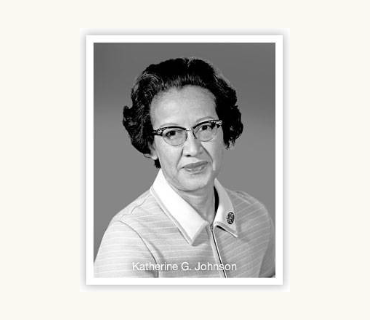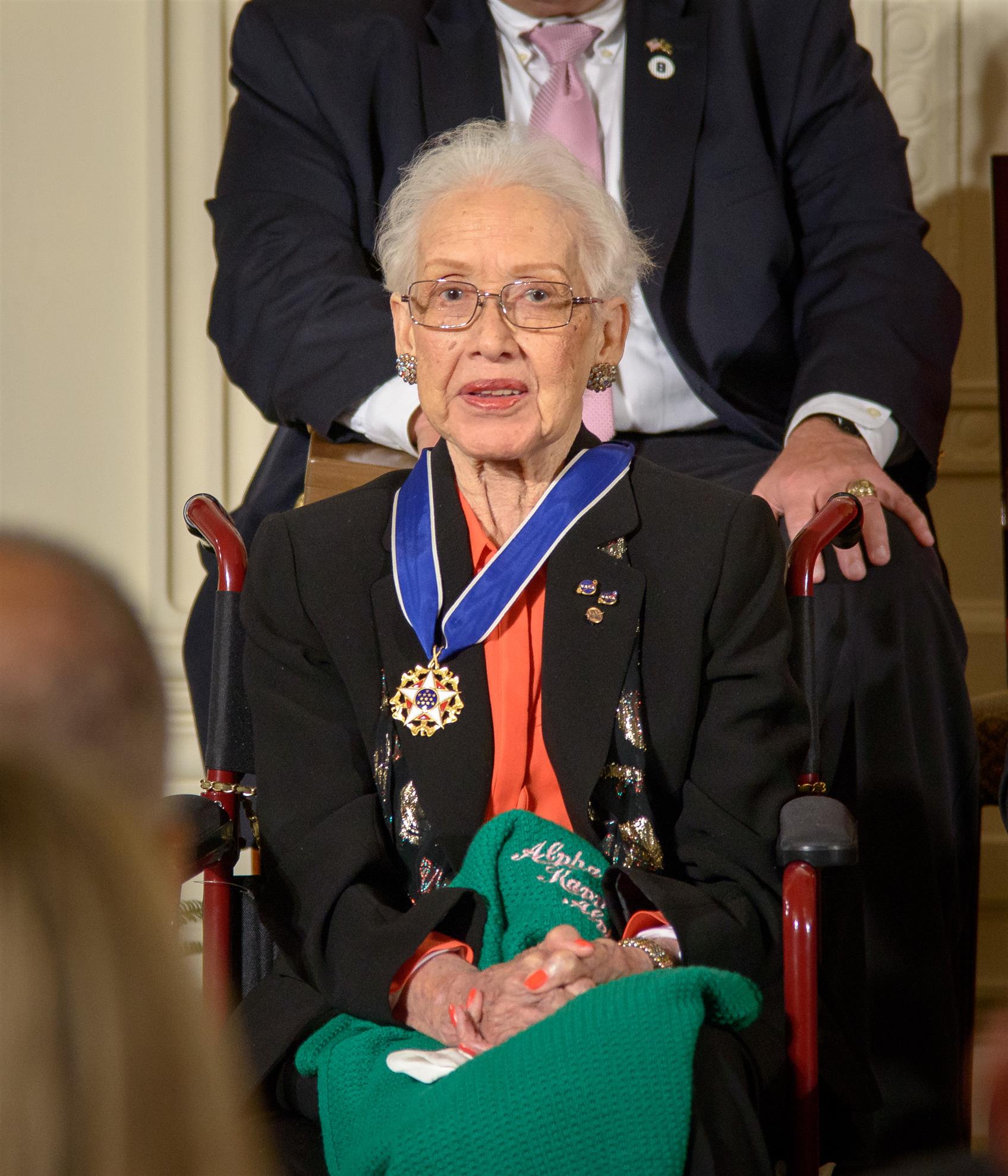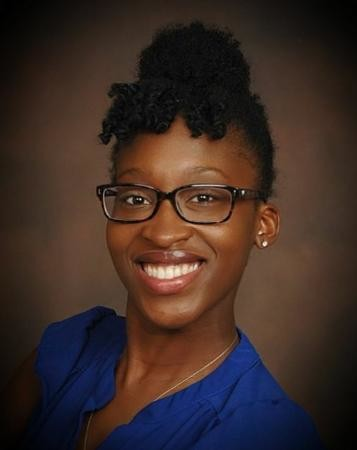
On Feb. 24, 2020, pioneering aerospace mathematician Katherine Johnson passed away at the age of 101.
Full Story
On Feb. 24, 2020, pioneering aerospace mathematician Katherine Johnson passed away at the age of 101. I’ve watched “Hidden Figures” so many times, Katherine Johnson’s character so skillfully portrayed by Taraji P. Henson, that I’ve memorized several scenes throughout the film. One of my favorite scenes depicts Katherine’s side of her initial encounter with the man she would eventually marry:
I will have you know, I was the first Negro female student at West Virginia University graduate school. On any given day, I analyze the velometer levels for air displacement, friction and velocity. And compute over ten thousand calculations by cosine, square root and lately analytic geometry. By hand. There are twenty, bright, highly capable Negro women in the west computing group, and we’re proud to be doing our part for the country. So yes, they let women do some things at NASA, Mr. Johnson. And it’s not because we wear skirts. It’s because we wear glasses.

Given all the notably impressive achievements enumerated in this monologue, it took several viewings for me to recognize the historical significance of its first sentence. Long before she received the Presidential Medal of Freedom, the highest civilian honor bestowed by the U.S. President, and long before she made history calculating trajectories for NASA flights, Katherine Johnson was one of three Black students, and the only woman, to desegregate West Virginia University. At the age of 21, she was already paving the way for thousands of women and students of color, for decades to come.
I watched “Hidden Figures” again recently, and as I transitioned from Black History Month into Women’s History Month, as a Black woman, I felt a great sense of pride in celebrating both aspects of my intersectional identity. But in my role as a CS educator, I also identified with the sense of moral sobriety and perpetual awareness of opposition that I witnessed throughout the film. I teach Exploring Computer Science and Media Computation courses at the high school level, and across each of these five sections of classes, my female and non-binary students and I are very aware that we are outnumbered by my male students.
More so out of curiosity than the pursuit of activism, I brought in Women’s History Month with discussions on stereotype threat with my students. In each class, we kicked off our discourse asking, What is the purpose of a stereotype? We explored the human brain’s natural inclination to classify and consolidate information to enable faster, more efficient processing. While we acknowledged that this way of organizing information seems harmless, if not helpful, we soon discovered that the phenomenon of stereotype threat, which occurs when a person internalizes a false assumption about a social group to which she/he/they belong, can be quite damaging. Unfortunately for the field of computing, its reputation for homogenous, male-dominated spaces persists, yielding the false assumption that those who don’t identify as male don’t belong in these spaces. Furthermore, according to my CS students, the overwhelming presence of males in a space is in itself perceived as a source of exclusion for female and non-binary students.
An 11th grade student who identifies as female shared the following observation of a Physical Computing class at our school: “They’re always building stuff and using cool equipment, but there’s only one girl in there. She looks like she’s having fun, so I guess she’s comfortable with that, and obviously she feels like she belongs in there, but⦠that’s not for me.” This powerfully illustrates the relevant and pressing need to address the structural inequalities and belief systems that impact access to and engagement with computer science knowledge. Gratefully, I am one of many stakeholders in CS Ed who answer the call to broaden participation among students whose identities have been historically marginalized and underrepresented in the field of computing. From equity-focused K-12 computer science curriculum developers and those who follow in Katherine Johnson’s trailblazing footsteps, working to achieve equity in higher education, to our corporate allies who work to eliminate biased and discriminatory hiring practices, we are all doing our part, while faced with the reality that there is still much work to be done in making CS for ALL.
 So, this Women’s History Month, I am using my classroom space to prepare ALL of my CS students to navigate the subcultures of inequality that they are likely to encounter, directly or vicariously, upon their entry into the computing ecosystem – in higher education and beyond. My students and I are currently brainstorming and implementing ways to counter stereotype threat in our learning space. Male students now intentionally seek out their female and non-binary peers when they get stuck or desire feedback on a new idea. I’ve been challenged to call on female and non-binary students to co-facilitate our classroom discussions, even if a male student asks first. Also, at the start of each period, as I take attendance, instead of saying “here” or “present,” each student responds with one word to describe how they are feeling – either at that moment or throughout the course of their day. This was noted by a female student to counter the proliferating narrative that “men don’t have feelings, but they do. They’re not allowed to express them. But maybe if they were, it wouldn’t be so weird when we show our emotions too.”
So, this Women’s History Month, I am using my classroom space to prepare ALL of my CS students to navigate the subcultures of inequality that they are likely to encounter, directly or vicariously, upon their entry into the computing ecosystem – in higher education and beyond. My students and I are currently brainstorming and implementing ways to counter stereotype threat in our learning space. Male students now intentionally seek out their female and non-binary peers when they get stuck or desire feedback on a new idea. I’ve been challenged to call on female and non-binary students to co-facilitate our classroom discussions, even if a male student asks first. Also, at the start of each period, as I take attendance, instead of saying “here” or “present,” each student responds with one word to describe how they are feeling – either at that moment or throughout the course of their day. This was noted by a female student to counter the proliferating narrative that “men don’t have feelings, but they do. They’re not allowed to express them. But maybe if they were, it wouldn’t be so weird when we show our emotions too.”We are learning about microaggressions (including the one that inspired Katherine Johnson’s reply above) and inventing professionally appropriate comebacks with which to respond in such a situation. My colleague and mentor provided a phenomenal example of a former student who went on to study computer science at the university level. At an orientation with other STEM students, she had a brief interaction with an engineering student who not-so-graciously offered, “I’ll tutor you when you need help.” (Read: There’s an underlying false assumption that a woman in a rigorous course of study would need one-on-one academic support.) Her response, in the name of equity, was brilliant, as she offered the same in return: “No, thanks, but I’ll tutor YOU when YOU need it.”
I’m preparing my students to become the Katherine Johnsons of the next generation. But until that day arrives, unlike Katherine Johnson and other “hidden figures,” my female and non-binary students will not have to wait to be seen, recognized, and celebrated for their valuable and worthwhile contributions to the field of computing. They deserve to belong and be included in every space they choose to enter. This is what CS for ALL looks like.
About the Author
 Charity Freeman is proud to be an inaugural CSTA Equity Fellow. She teaches Computer Science at Lane Tech College Prep High School in Chicago. Originally from Concord, New Hampshire, Charity earned a B.S. in Small Business Management and Entrepreneurship and began her work in education as a high school career advisor, where she realized her desire to teach full-time. Charity will earn her M.A. in Cultural and Educational Policy Studies from Loyola University Chicago in May 2020. She is a contributing member of the Association for Computing Machinery’s Special Interest Group on Computer Science Education and the American Educational Research Association. She is also a 2019-2020 Teach Plus Illinois K-12 Policy Fellow. Charity is passionately committed to democratizing Computer Science by supporting equitable student access, engagement, and achievement, both within and beyond the classroom.
Charity Freeman is proud to be an inaugural CSTA Equity Fellow. She teaches Computer Science at Lane Tech College Prep High School in Chicago. Originally from Concord, New Hampshire, Charity earned a B.S. in Small Business Management and Entrepreneurship and began her work in education as a high school career advisor, where she realized her desire to teach full-time. Charity will earn her M.A. in Cultural and Educational Policy Studies from Loyola University Chicago in May 2020. She is a contributing member of the Association for Computing Machinery’s Special Interest Group on Computer Science Education and the American Educational Research Association. She is also a 2019-2020 Teach Plus Illinois K-12 Policy Fellow. Charity is passionately committed to democratizing Computer Science by supporting equitable student access, engagement, and achievement, both within and beyond the classroom.
